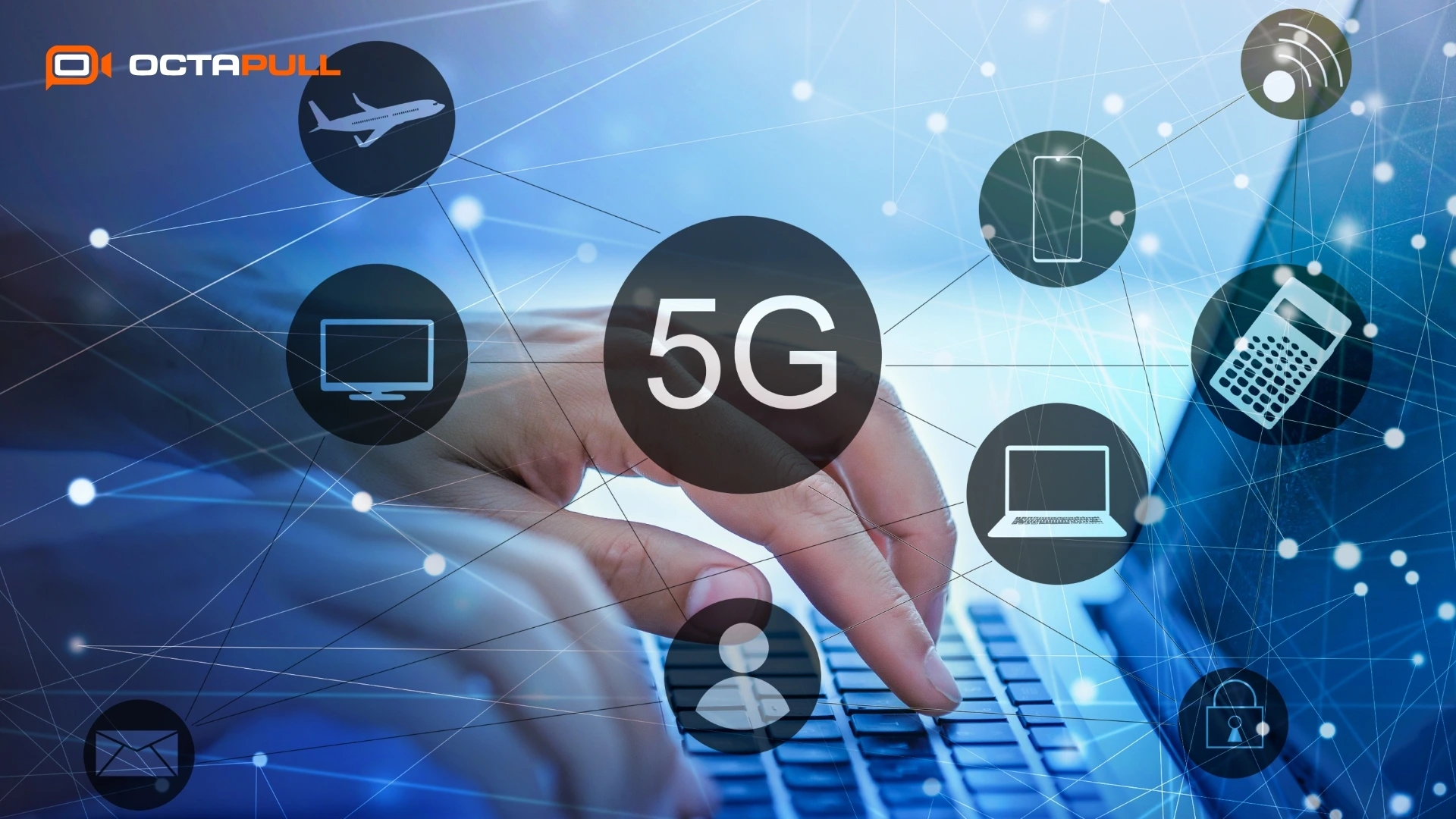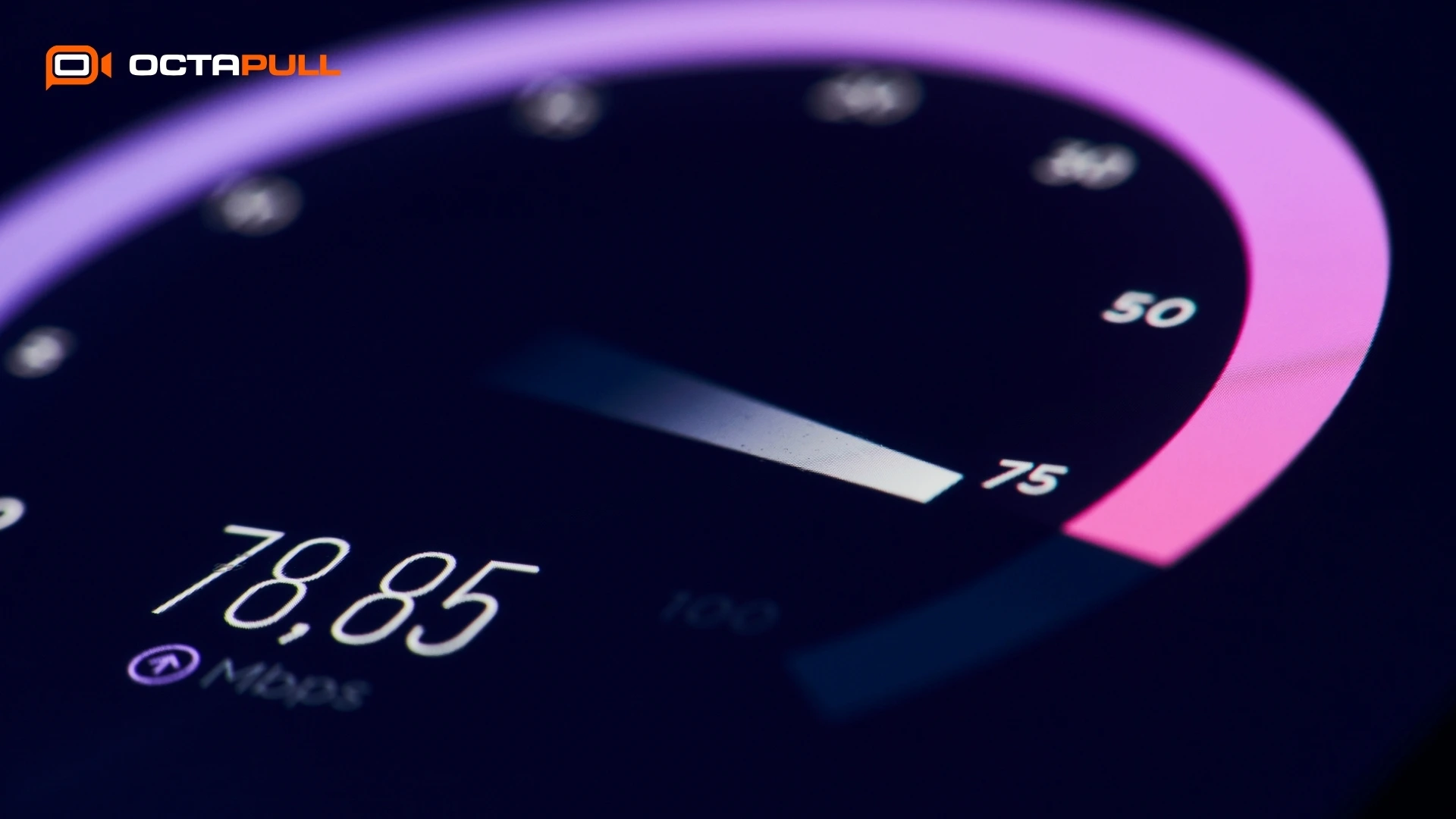As businesses rely on high-speed internet for daily operations, staying up-to-date with the latest advancements is essential.
Two of the most talked-about technologies in the realm of connectivity are 5G vs 10G. While 5G has already begun to make waves, 10G is poised to take network performance to the next level, offering speed, reliability, and capacity far beyond what 5G can currently provide.
In this post, we’ll explore the key differences between 10G and 5G and why this new technology represents the next big leap in network technology.
More importantly, we’ll explain why 10G matters for businesses and its impact on business operations, such as decision-making, collaboration, and elevating customer experiences.
What is 10G?
While the term “10G” may sound like the 10th generation of network technology, it refers to 10 gigabits per second, a measure of data transmission speed.
In the telecom context, 10G is not about a new generation of wireless technology, like 5G, but rather a new era of fiber-optic broadband that promises ultra-fast, reliable, and high-capacity internet.
Here’s what makes 10G stand out:
- 10 Gigabits Per Second (10Gbps): The key defining feature of 10G is its blazing fast speed of 10 gigabits per second. This is a huge leap from current speeds available with 5G and 4G, which typically top out at a few gigabits per second. With 10G, businesses and consumers will experience download speeds that allow for ultra-high-definition streaming, immediate cloud access, and real-time data processing without slowdowns.
- Capacity: With 10G’s increased bandwidth, networks can handle significantly more traffic, making it ideal for areas with high user densities or industries that rely on heavy data transfer, such as entertainment, healthcare, and financial services. This means businesses will be able to connect more devices and users simultaneously, without sacrificing speed or reliability.
- Lower Latency: While 5G has already made strides in reducing latency, 10G takes this further by offering even faster response times. With latency as low as a millisecond or less, 10G will make real-time communications, cloud computing, and interactive applications more seamless than ever before.
- Reliability: 10G promises an exceptionally stable connection, which is crucial for industries requiring constant uptime. Unlike 5G, which relies on wireless towers and is subject to signal interference, 10G is powered by fiber-optic cables, offering a more reliable and consistent connection.
In short, 10G represents the future of high-speed broadband, providing businesses with the speed, capacity, and reliability needed to operate more efficiently in a data-heavy world.
This advancement is set to revolutionize industries and enable new technologies that 5G cannot yet support at the same scale.
What is 5G? 
5G is the fifth generation of mobile network technology, designed to provide faster speeds, lower latency, and greater capacity than its predecessor, 4G.
This breakthrough technology aims to support the growing demand for mobile data and deliver seamless connectivity in an increasingly digital world.
Key features of 5G include:
- Speed: 5G is capable of delivering download speeds up to 100 times faster than 4G, with theoretical speeds reaching up to 10 gigabits per second (Gbps). This allows for ultra-fast downloads, high-quality video streaming, and real-time data transfer without lag.
- Latency: One of the standout features of 5G is its low latency, or the delay before data is transmitted. While 4G networks typically have a latency of around 30 milliseconds, 5G can reduce this to just 1 millisecond, making it ideal for real-time applications like online gaming, remote control, and live video streaming.
- Bandwidth and Capacity: 5G offers higher bandwidth, which enables more devices to connect simultaneously without experiencing slowdowns. This is particularly important as the number of connected devices continues to grow, from smartphones to IoT (Internet of Things) devices.
What is the Difference Between 10G and 5G?
When comparing 10G vs 5G, it’s important to understand that these two technologies serve different needs and are designed with different capabilities in mind.
While both promise faster speeds, lower latency, and greater capacity than their predecessors, the difference between 10G and 5G becomes clear when we look at key factors like speed, latency, capacity, and infrastructure.
1. Speed
- 5G: 5G networks are capable of delivering download speeds of up to 10 Gbps in ideal conditions, though real-world speeds are typically lower, often ranging between 1-3 Gbps. This makes 5G suitable for mobile devices, enabling fast downloads, HD streaming, and quick app performance.
- 10G: 10G, on the other hand, refers to 10 gigabits per second of data transfer, but 10G is generally seen in fixed broadband networks, such as fiber-optic connections, rather than mobile networks. This speed is designed to deliver ultra-fast internet to homes, businesses, and data centers, enabling high-definition video conferencing, cloud computing, and simultaneous multi-user support without bottlenecks.
Key Difference: While both 10G and 5G offer impressive speeds, 10G provides more consistent high-speed performance, particularly in environments where large amounts of data need to be transferred quickly and reliably.
2. Latency
- 5G: One of the standout features of 5G is its low latency, capable of reaching as low as 1 millisecond. This makes 5G ideal for applications requiring real-time communication, such as virtual reality (VR), online gaming, and telemedicine, where even slight delays can disrupt the user experience.
- 10G: 10G also offers extremely low latency, with sub-millisecond delays, making it perfect for scenarios that demand near-instantaneous data transfer, such as live-streaming, video conferencing, and industrial automation. While 5G excels in mobile contexts, 10G is designed to handle real-time data in high-demand fixed broadband environments.
Key Difference: 10G vs 5G latency is comparable, but 10G is more reliable for fixed broadband environments and industries with high-volume data transfer, ensuring minimal disruptions for mission-critical operations.
3. Capacity & Reliability
- 5G: 5G networks are designed to support a high number of concurrent connections, making them great for mobile environments where multiple devices, such as smartphones, wearables, and IoT devices, need to stay connected at the same time. However, 5G’s reliability can fluctuate depending on factors like signal strength and network congestion.
- 10G: 10G shines in terms of capacity and reliability. Its fiber-optic infrastructure can handle a vast number of simultaneous users and devices without experiencing slowdowns, providing consistent, high-speed connections. This makes it an ideal choice for businesses, data centers, and smart cities where large amounts of data need to be transferred quickly and reliably.
Key Difference: 10G offers greater scalability and reliability than 5G, especially in fixed, high-density environments like offices, factories, and urban centers, ensuring that businesses can support high volumes of connected devices without degradation in service.
4. Infrastructure Differences
- 5G: As a wireless technology, 5G relies on cellular towers and radio frequencies to provide coverage. This means it is highly mobile, perfect for users on the go. However, it is also vulnerable to interference from physical obstructions, and its coverage may not be as consistent in certain areas, particularly in rural or densely built environments.
- 10G: Unlike 5G, 10G is based on fiber-optic cables, which means it provides more stable, reliable connections that are not affected by physical obstructions or interference. This new technology is designed to serve fixed locations, such as homes, businesses, and data centers, providing ultra-fast internet access without the mobility of 5G but with more reliable, higher-quality service in the areas it covers.
Key Difference: 10G’s fiber-optic infrastructure is more reliable and consistent than 5G’s wireless infrastructure, but it is less flexible in terms of mobility.
Why 10G Matters for Businesses 
As businesses navigate an increasingly digital world, the need for faster, more reliable internet connectivity has never been more critical.
This is where 10G comes in. It’s not just a technological advancement; it’s a game-changer for business operations, enabling companies to work faster, collaborate more efficiently, and provide superior customer service.
1. Improved Decision-Making: Faster Data = Faster Insights
In the fast-paced business world, speed is everything. 10G allows businesses to collect and analyze data in real-time, leading to faster, more informed decision-making.
With the ability to transfer large datasets quickly, teams can access insights instantly, enabling them to respond to market changes, customer needs, and operational challenges without delays.
This is particularly beneficial for industries like finance, healthcare, and manufacturing, where quick decisions are often the difference between success and failure.
2. Real-Time Collaboration: High-Definition Video, Seamless Conferencing
The rise of remote and hybrid work has made real-time collaboration essential for business success. 10G allows for seamless high-definition video conferencing, real-time file sharing, and collaborative tools without any lag or degradation in quality.
Thanks to fast internet and online brainstorming tools, remote teams can communicate instantly, making it easier to brainstorm, share ideas, and execute projects quickly.
For businesses in industries like technology, education, and media, where collaboration is a core part of day-to-day operations, the power of this new technology ensures that teams stay connected and productive, no matter where they are.
3. Better Customer Experiences: Instant Service, No Lag or Delay
In today’s competitive landscape, providing an exceptional customer experience is key to retaining clients and building loyalty. 10G enables businesses to offer instant service, whether it’s through chatbots, video support, or real-time order tracking, without lag or delays.
Customers expect immediate responses, and this latest technology empowers businesses to meet those expectations.
Whether in e-commerce, customer support, or online banking, companies can enhance their customer service by providing smooth, uninterrupted interactions, ensuring that customers have a positive, frustration-free experience every time.
4. Scalability: Supporting Growth Without Bottlenecks
As your business grows, so does the volume of data you need to handle. With 10G, companies can easily scale their operations without worrying about bandwidth limitations or network bottlenecks.
The latest infrastructure can handle an increased number of users and devices, ensuring that your business can expand smoothly, whether by adding new employees, launching new services, or entering new markets.
Businesses can confidently invest in growth, knowing that their network can support increasing demand for faster and more reliable services.
How 10G Transforms Businesses
10G internet doesn’t only mean speed, it means smoother, more productive business operations, especially when it comes to online meetings, video conferences, and team collaboration.
As businesses embrace hybrid and remote work models more and more today, this new technology plays a critical role in transforming how teams connect, communicate, and collaborate online.
Hosting Fast Online Meetings with No Lag
Say goodbye to frozen screens and audio delays. With 10G and web meeting tools, online meeting experiences become seamless, with high-quality visuals and real-time audio. This new technology ensures everyone stays connected without interruptions.
If you want to improve the quality of your virtual meetings? Discover how OctaMeet supports next-generation online collaboration powered by this latest technology.
Improving Online Workflow and Teamwork
10G internet significantly enhances cloud-based collaboration tools, allowing teams to co-edit large documents, share high-resolution files, and manage projects in real time without bandwidth concerns. From brainstorming sessions to project handovers, communication becomes more fluid and efficient.
Supporting Scalable Growth
As your team grows or expands internationally, 10G provides the infrastructure needed to support multiple online meetings and data-heavy applications. Whether it’s onboarding remote employees or hosting large-scale webinars, you can count on stable, high-speed performance.
Stay Ahead with OctaMeet and 10G! 
To fully capitalize on the power of this new technology, businesses need tools that are designed to operate seamlessly in ultra-fast, low-latency environments.
That’s where OctaMeet comes in, a high-performance collaboration platform built to match the speed, stability, and reliability of next-gen networks like 10G.
What is OctaMeet?
OctaMeet is a modern collaboration and communication tool engineered for real-time performance. Whether you’re managing a global team, hosting a product demo, or supporting customers remotely, OctaMeet ensures smooth, high-quality interactions with no lag, no dropped connections, and no frustrating delays.
Why OctaMeet and 10G Are a Perfect Match
- Optimized for High-Speed Connections: OctaMeet takes full advantage of 10G’s massive bandwidth and ultra-low latency, delivering crystal-clear video, instant screen sharing, and real-time audio, even with large groups.
- Scalable and Secure: Whether you’re a startup or a global enterprise, OctaMeet scales with your needs while maintaining enterprise-grade security and compliance.
- Minimal Downtime: With 10G’s reliability and OctaMeet’s architecture, say goodbye to buffering and connection errors during critical meetings.
You Can Use OctaMeet for:
- Remote Team Syncs: Run large-scale, interactive team meetings across global offices with zero lag, crystal-clear visuals, and instant file collaboration.
- Customer-Facing Support: Offer real-time support sessions or virtual consultations that feel face-to-face, building trust and improving satisfaction.
- Live Product Demos: Showcase your product to potential clients without delay or video issues, creating a professional and impactful first impression.
Experience the power of OctaMeet + 10G and take your collaboration, customer service, and operations to the next level. Don’t let outdated tools or slow connections hold you back.
Sign up for OctaMeet’s 30-day free trial or schedule a demo meeting with our product team!


